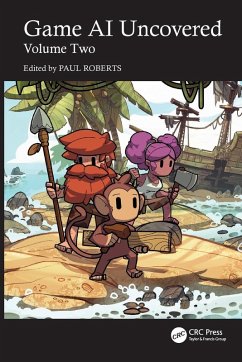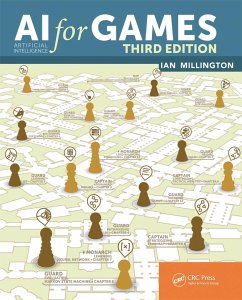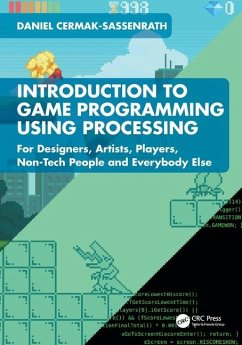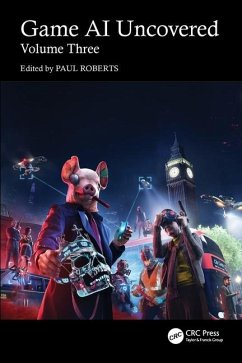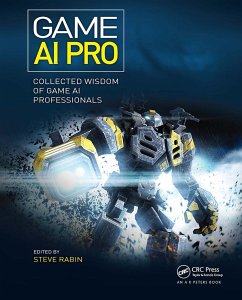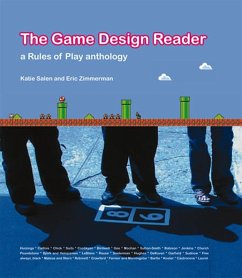
Game AI Uncovered
Volume One
Herausgegeben: Roberts, Paul
Versandkostenfrei!
Versandfertig in 6-10 Tagen
138,99 €
inkl. MwSt.
Weitere Ausgaben:

PAYBACK Punkte
69 °P sammeln!
Game AI Uncovered: Volume One kicks off a brand-new series of books that focus on the development of artificial intelligence in video games. This volume brings together the collected wisdom, ideas, tricks, and cutting-edge techniques from 20 of the top game AI professionals and researchers from around the world.The techniques discussed in these pages cover the underlying development of a wide array of published titles, including Hood: Outlaws and Legends, The Escapists 2, Sackboy: A Big Adventure, Call of Duty: Strike Team, GTI+ Club, Split/Second, Sonic All Stars Racing Transformed, Luna Abys...
Game AI Uncovered: Volume One kicks off a brand-new series of books that focus on the development of artificial intelligence in video games. This volume brings together the collected wisdom, ideas, tricks, and cutting-edge techniques from 20 of the top game AI professionals and researchers from around the world.
The techniques discussed in these pages cover the underlying development of a wide array of published titles, including Hood: Outlaws and Legends, The Escapists 2, Sackboy: A Big Adventure, Call of Duty: Strike Team, GTI+ Club, Split/Second, Sonic All Stars Racing Transformed, Luna Abyss, Medal of Honor Heroes I & II, Age of Empires IV, Watch Dogs, Battlefield 2042, Plants vs. Zombies: Battle for Neighborville, Dead Space, and more.
Contained within this volume are overviews and insight covering a host of different areas within game AI, including situational awareness, pathfinding, tethering, squad behaviours, coordination, auto-generating navigation link data, fluid movement, combining behaviour and animation systems, pedal control for cars, tactical positioning, level of detail, infinite axis utility systems, hierarchical state machines, bots for testing, reactive behaviour trees, and more.
Beginners to the area of game AI, along with professional developers, will find a wealth of knowledge that will not only help in the development of your own games but will also spark ideas for new approaches.
This volume includes chapters written by Andy Brown, Dr Allan Bruce, Richard Bull, Laurent Couvidou, Steven Dalton, Michele Ermacora, Jonas Gillberg, Dale Green, Johan Holthausen, Dr Aitor Santamaría Ibirika, Dr Nic Melder, Sarat Rallabandi, Bruno Rebaque, John Reynolds, Paul Roberts, David Rogers, Andrea Schiel, Huw Talliss, Dr Tommy Thompson, and David Wooldridge.
The techniques discussed in these pages cover the underlying development of a wide array of published titles, including Hood: Outlaws and Legends, The Escapists 2, Sackboy: A Big Adventure, Call of Duty: Strike Team, GTI+ Club, Split/Second, Sonic All Stars Racing Transformed, Luna Abyss, Medal of Honor Heroes I & II, Age of Empires IV, Watch Dogs, Battlefield 2042, Plants vs. Zombies: Battle for Neighborville, Dead Space, and more.
Contained within this volume are overviews and insight covering a host of different areas within game AI, including situational awareness, pathfinding, tethering, squad behaviours, coordination, auto-generating navigation link data, fluid movement, combining behaviour and animation systems, pedal control for cars, tactical positioning, level of detail, infinite axis utility systems, hierarchical state machines, bots for testing, reactive behaviour trees, and more.
Beginners to the area of game AI, along with professional developers, will find a wealth of knowledge that will not only help in the development of your own games but will also spark ideas for new approaches.
This volume includes chapters written by Andy Brown, Dr Allan Bruce, Richard Bull, Laurent Couvidou, Steven Dalton, Michele Ermacora, Jonas Gillberg, Dale Green, Johan Holthausen, Dr Aitor Santamaría Ibirika, Dr Nic Melder, Sarat Rallabandi, Bruno Rebaque, John Reynolds, Paul Roberts, David Rogers, Andrea Schiel, Huw Talliss, Dr Tommy Thompson, and David Wooldridge.







